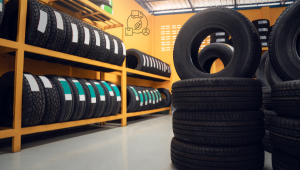Program Overview
This program empowers QA, R&D, and manufacturing professionals to master the latest testing, inspection, and validation technologies in tyre manufacturing. Participants will explore both traditional and modern methods — from endurance and high-speed uniformity testing to AI-based defect detection, digital twins, and predictive QA systems. The course would emphasize the global benchmarks (ISO, ASTM, ECE, BIS), the use of statistical process control (SPC) and Quality by Design (QbD) methodologies, and the integration of data analytics for real-time quality improvement. Through case studies from leading tyre manufacturers, hands-on exercises, and simulations, participants will learn how to enhance accuracy, consistency, and reliability while embedding a culture of continuous improvement across the plant.
Features
- Understand modern tyre testing methodologies and their link to product performance
- Apply advanced inspection and AI-driven quality control techniques in plants
- Utilize SPC, QbD, and DOE to analyze and improve process capability
- Design predictive and preventive QA systems aligned with “Zero Defect” vision
Target audiences
- QA/QC Professionals
- R&D Professionals
- Process Engineers
- Plant Managers
- Digital Transformation Teams
Curriculum
- 6 Sections
- 35 Lessons
- 1 Day
- The Quality Imperative in Tyre Manufacturing6
- 1.1Tyre performance parameters: uniformity, balance, rolling resistance, and endurance
- 1.2QA Framework: Incoming → In-process → Final inspection → Market feedback loop
- 1.3Cp, Cpk, Ppk, and Process Sigma levels
- 1.4Quality cost pyramid: Prevention, Appraisal, Internal & External failure costs
- 1.5“Zero Defect” manufacturing philosophy and quality goals
- 1.6Exercise: Map QA checkpoints to identify value-adding vs. redundant inspection stages
- Advanced Tyre Testing Techniques7
- 2.1Mechanical Testing: Endurance, High-speed, Bead unseating, and Plunger energy tests
- 2.2Dynamic Testing: Rolling resistance, cornering stiffness, heat build-up, ride comfort
- 2.3Chemical & Physical Analysis: Mooney viscosity, rebound resilience, cure curve, abrasion index
- 2.4Indoor vs. Outdoor Testing Correlation: Vehicle simulation vs. real-road validation
- 2.5High-speed uniformity (HSU) testing & radial run-out monitoring
- 2.6Industry Benchmark: CEAT’s dynamic test rigs & Michelin’s indoor simulators for virtual validation.
- 2.7Case analysis — compare two compound formulations and predict how differences affect rolling resistance and endurance test results
- Digital QA Systems & Inline Inspection Automation7
- 3.1Automated X-ray inspection and laser shearography for non-destructive testing (NDT)
- 3.2Computer vision and AI-based surface defect detection systems
- 3.3Machine Learning for anomaly classification (bulges, blisters, splices)
- 3.4Data fusion: merging vision + process data for real-time control
- 3.5Smart inspection cells & integrated QA dashboards (OEE–defect correlation)
- 3.6Case Study: Automation of curing-to-dispatch QA workflow — vision-based uniformity checks
- 3.7Exercise: Review sample defect images and classify failure type using given inspection parameters
- Quality by Design (QbD) and Statistical Process Control (SPC)7
- 4.1Quality by Design (QbD) methodology in tyre production
- 4.2Control charts (X-bar, R, P, NP) and interpretation
- 4.3Process capability indices (Cp, Cpk) and their improvement strategies
- 4.4DOE (Design of Experiments) for identifying critical process parameters
- 4.5Six Sigma and DMAIC application in tyre uniformity improvement
- 4.6Industry Examples: Uniformity enhancement program using SPC & DOE analysis
- 4.7Exercise: Analyze sample SPC data to identify variation trends and propose process adjustments
- AI, Predictive QA & Digital Twin Validation6
- 5.1Predictive defect analytics using AI/ML models
- 5.2Generative AI for synthetic defect data creation & training inspection algorithms
- 5.3Digital twin models for predicting curing uniformity and structural integrity
- 5.4Closed-loop feedback systems for real-time QA adjustments
- 5.5Case Insight: R&D initiative in AI-based early defect prediction using historical inspection data
- 5.6Interactive Exercise: Design a predictive QA dashboard — define key defect signals, thresholds, and corrective action triggers
- Quality Culture & Continuous Improvement Framework2






